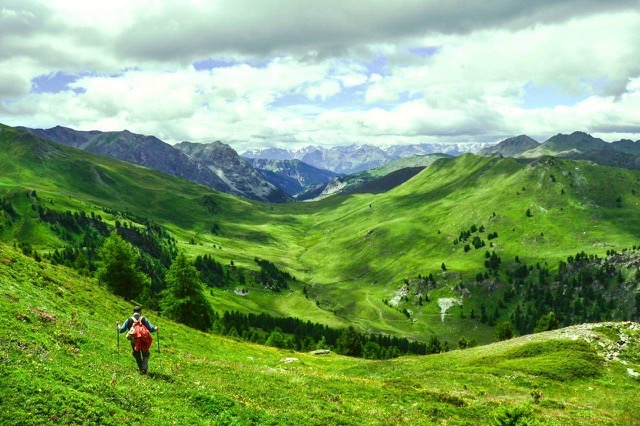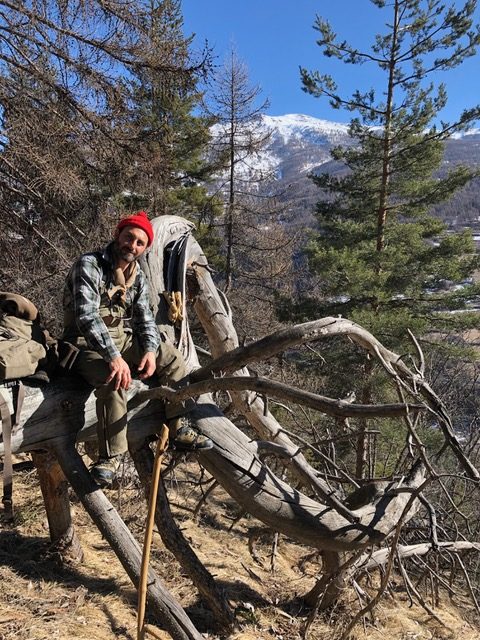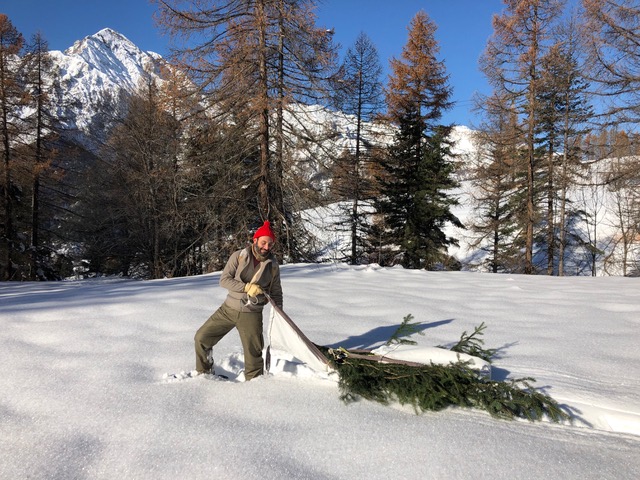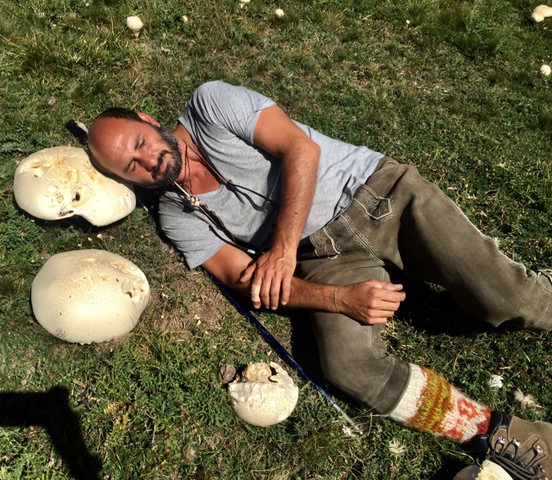Andrea Foggini - Interview

Andrea Foggini is devoted to the peace of the mountains. Its solitude; its cool morning air; sunrise and sunsets that colour its peaks in a majestically surreal way. Every morning he perceives poetry in nature, since for him it is the most wonderful thing to explore, know and live the mountain environment to its fullest.
Located in the ‘Alta Val di Susa’ in Piedmont, Italy, lying at an altitude of 1500mt, are the mountains and hills that surround the tiny village of San Sicario, the place Andrea calls Home; Also, the place in which Magic Mountain Collective was born. Many paths branch out from here, taking you far along trails, meadows and deep forests. Andrea’s endless expeditions go through these to places like Valle Argentera, Thuras, Lago Nero and Monti della Luna; to the territories of Champlas, SanSicario, Mollieres, Solomiac, Desertes, Fenils, Gorge di san Gervasio and on great Chaberton; until emerging in Queyras.
Thanks to his experience, acquired by strolling around in the Wild, Andrea cultivated the passion for foraging: the art of searching and harvesting wild fruits and herbs.
“Our forefathers have always done this”, Andrea tells Magic Mountain, “they would cut chicoree and dandelion leaves for salads; collect ‘timo serpillo’ to season meat and fish, or to infuse alcohol with to obtain a liquor; wild sage and ‘barbabouc’ were used for ‘frittata’ or in quiche; cumin for cheese; and pinecones from the local pines would be used for extracting pinecone syrup, that is used as medicine for bronchitis or asthma”
As a consequence of our society’s current state of isolation, a surreal silence has promptly returned to our valleys. Now deserted of people, the mountain’s wildlife is able to start moving calmly again, reconquering its lands and encouraging the right conditions for wolfs to re-establish. Andrea’s first encounter with a wolf took place in broad daylight, at 13.25pm on May 31st, 2017. He managed to photograph the incredible experience at a mere distance of twenty meters, knowing it was a rare privilege he might never live again.

“I placed a bell over my tree tent to keep squirrels from coming inside in search of food. A soft jingle that rings whiles they pass by.
Especially now that the ski season is over, you can see a lot more wildlife walking free, such as deer and roe deer; chamois; wild boars; hares; foxes; european badgers; eagles and bearded vultures. Soon, we’ll be able to see the black grouse ‘courting ritual’, a dance of true seduction.
[…]
“I deeply enjoy roaming about the mountains; looking up and around; pausing a second to listen and smell in search of edibles, like wild berries and herbs to collect.
I believe this is a passion I developed during my childhood. Throughout most of it, I lived in Turin. In a small house, surrounded by a big park. I would always observe fascinated as the gardener would cut the grass of the park. Then, when we would go to the countryside, I would be drawn to all the different plants, but mostly to the vegetable garden. My whole family has always kept a strong affection towards nature.
In early adulthood I developed a big interest to the people and tales of the mountains. Stories told by friends, shepherds, farmers and artisans, who showed me their ways and taught me to respect their traditions. I’ve learned different things from each of them, but above all, to be able to see the world through their eyes.
The rest of my knowledge comes from all the time I spent researching and dreaming about animals, herbs and the alpine flora. Thanks to my precious books, I learned that throughout our territory there are more than 250 species of edible plants.”
[…]
” Every season has its own peculiarities, with even winter having its own delicacies. In spring, for example, when the snow melts, dandelions sprout through the meadows. It tastes fantastic on salads or eggs; in a frittata; or in pasta, sautéed with garlic, oil and hot chili.
Another particularly interesting wild plant, named ‘asfodelo montano’, blooms in the ends of April on the meadows and mountain pastures. Its flowers unite in a cob and its petals are white with a dark line through the center. Its tuberous roots are edible and taste a lot like turnips when they are boiled or cooked under coal and ashes.”
In summer, Andrea loves collecting berries; blueberries, wild strawberries and raspberries, which are ideal for jams and pastry.

He does not have a favorite season, for all of them are unique and different from year to year. It takes just small climatic variations for plants to stop blooming altogether “Last year the laburnum barely bloomed and for this reason we had a scarce harvest of wild plums; called around here as ‘marmotte’.”
Andrea now loves to collect tree branches from the ground in order to craft beautiful art pieces; which also pass as functional household decorations. Some of them are displayed in Magic Mountain Collective’s space in San Sicario.
“The idea came to me for more of a practical motive than just the aesthetics. I was looking for something unique to substitute the classic door wood handle or standard wall hooks. I search for the right branches and with the help of a carving knife, I shape and smooth them. I add some screw holes, to make them easier to mount; finishing them with a coat of beewax. Their shape is inspired by the designs of deer antlers or chamois horns; for this reason, I call them ‘FALSIPALCHI’. The wood I use, that is found around here, consist of ash tree; larch; pine; fir tree; swiss pine; laburnum and Cherry tree.
What I do is no more than accentuating the magnificent and surprising shapes of nature. Every piece has its own unique story with which they transmit the energy and spirit of the mountain.

On some occasions, I find on the beds of streams wood that has been smoothened by water and scraped by rocks. Some seem petrified, with higher density and a hardened material which seems nearly metallic.
[…]
“The landscape constantly changes. Now, the larch trees started ornamenting their branches with crimson flowers; the ‘Anemone hepatica’, also known as pennyworth or kidneywort, are covering the undergrowth of the forests; primroses sprout and hellebores resurface; lilies bloom; and a little further on, in melted snow puddles, wild orchids grow. The meadows and pastures are becoming greener and richer with colour by the day.
I will forever enjoy walking aimlessly with no worries of what lies behind or a little further on. There are always surprising new things to find. I’ve always told myself “trust what nature taught you and never take the trail, and you will still stumble upon one sooner or later”.
Hopefully this lockdown will soon be over, so we can all walk freely again through the wonders of your nature.
-In tutto io vivo tacito come la Morte. E la mia vita è divina –
Gabriele D’Annunzio ‘Laudi del cielo del mare della terra e degli eroi’, libro III Alcione.
Written by Guido Andruetto
